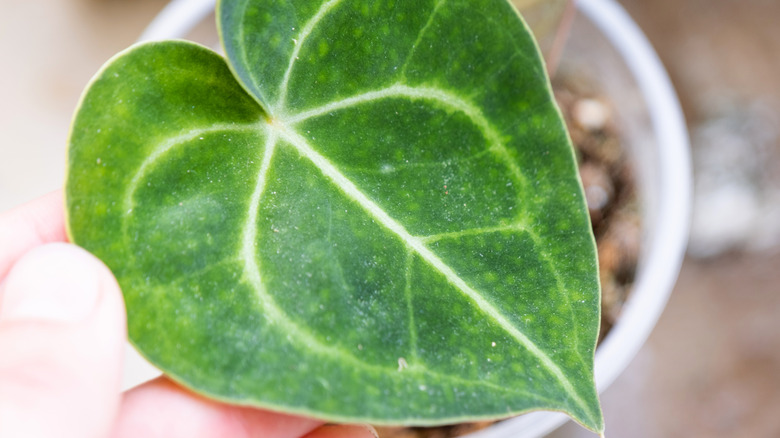Use This Common Household Product To Get Rid Of Spider Mites
Having a collection of eclectic houseplants is every budding gardener's dream, but that dream can quickly turn into a nightmare when you notice a telltale silver sheen on some of your leaves. At first, it looks like spiderwebs, making you think you have a helpful spider setting up shop in your planter. But when you discover what you actually have is spider mites, pure panic begins to set in. These aggressive pests can jump from plant to plant, infecting your entire collection if you don't move fast enough. They'll eat away at the leaves, and you'll often notice brown stippling accompanying the fine silver webbing. And if you let the mites get settled long enough, the plant will begin to deplete and die.
Depending on how big the infestation is, it can be difficult to eradicate them. But there is one handy tool in your medicine cabinet that can help you wipe them out, and that's hydrogen peroxide. The same thing that helps lift stubborn clothes stains and clean wounds can also help you fight off spider mites. Grab that trusty brown bottle out of the bathroom or pantry, and prepare to use it to fix your ailing plants. Here's how.
How to use hydrogen peroxide to fight off spider mites
Spider mites are dangerous to houseplants because they feed on the leaves' cell contents. They usually live on the underside of the leaves, and since they come in colonies, where you have one, you have many. As they drink up the plant's fluids, the leaves become compromised and wilt or turn yellow. Eventually, they curl up, turn brown, and die. Some remedies include using neem oil and blasting plants with high-pressure water (either from your hose, shower head, or kitchen spray nozzle). But what if they make their way into the dirt or keep reappearing on the leaves? That's when hydrogen peroxide comes in.
To create your treatment, mix a 1:1 ratio of 3% hydrogen peroxide with water and pour it into a spray bottle. Then, thoroughly spray down the leaves, stems, and dirt, taking special care to get the underside of the leaves. You will most likely hear a fizzing noise when you do so, which means it has made contact with the mites, effectively killing them. If you have a larger infestation, you can use the full-strength peroxide rather than diluting it with water. However, this only works when you make contact with the pests; it won't kill off any new mites that wander onto the sprayed leaf. It also won't kill the mite's eggs, so a new infestation can reappear in a few days. To remove the eggs, you must spray and wipe down the plant with neem oil.
